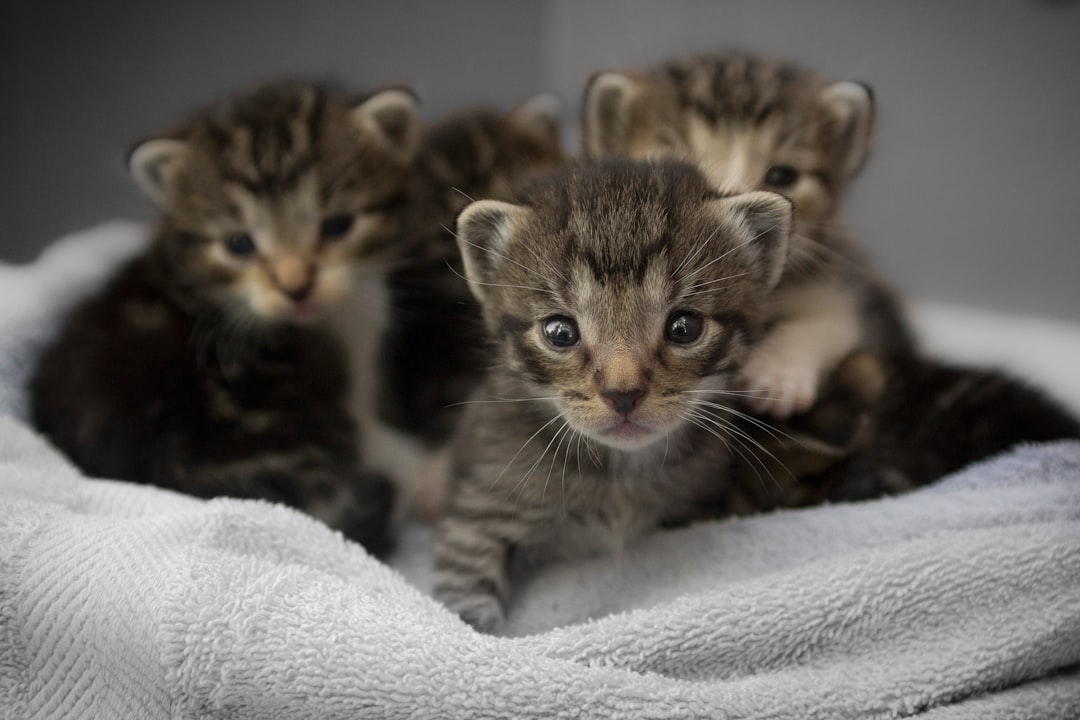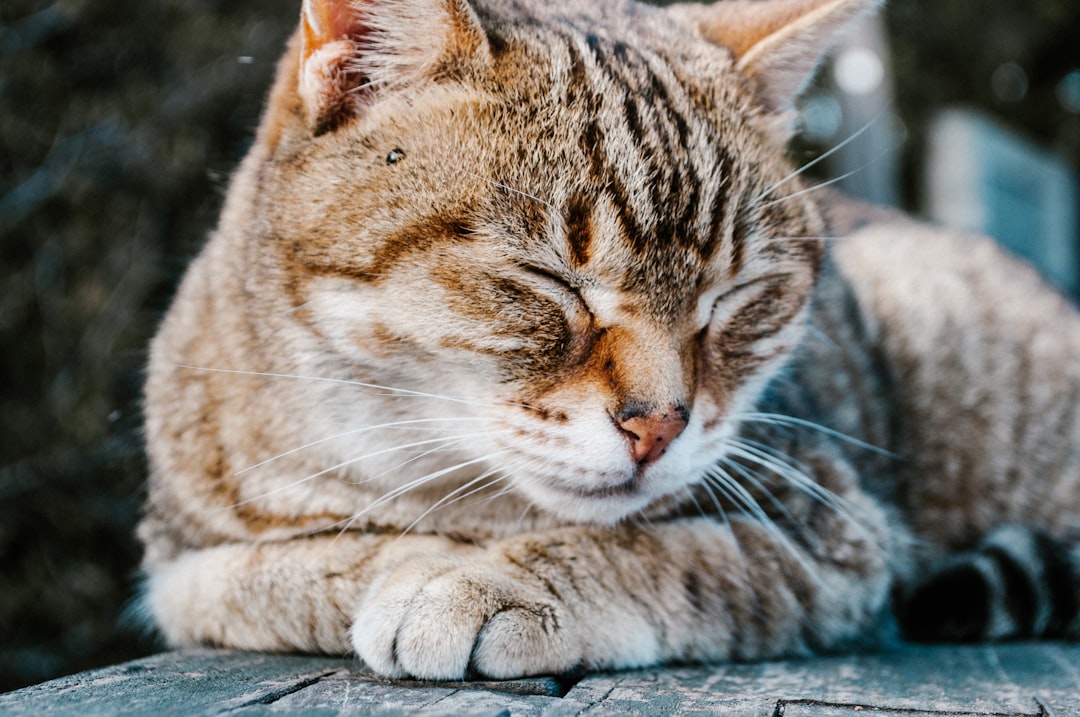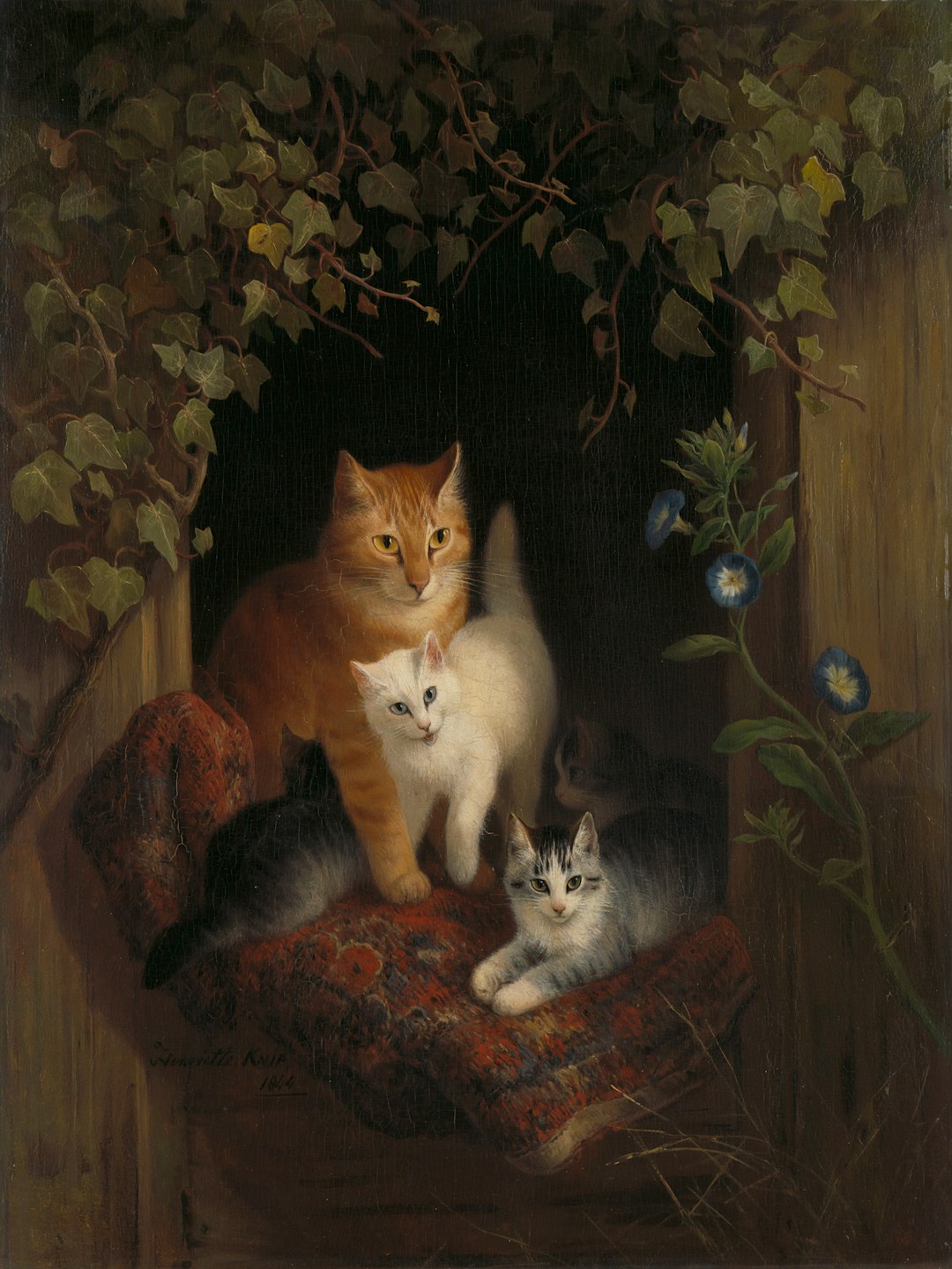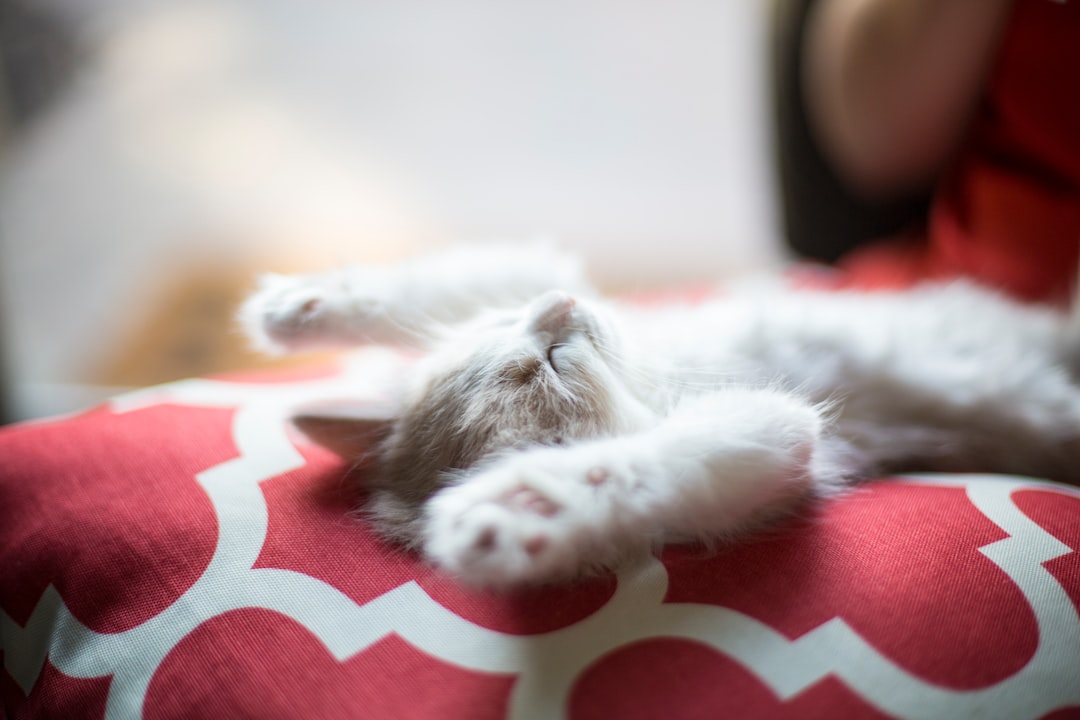Rodent ulcer in cats, often referred to as a "rodent ulcer cat lip," is a concerning condition that affects feline health and wellbeing. This lip lesion manifests through various symptoms, which may go unnoticed initially. Understanding the causes and implications of rodent ulcers is crucial for cat owners. Additionally, timely diagnosis and effective treatment can significantly improve your cat’s quality of life. In this blog post, we will explore the characteristics of rodent ulcers, their symptoms, and available treatment options, enabling you to better care for your furry friend.
What is Rodent Ulcer in Cats?
Rodent ulcer, commonly referred to as a rodent ulcer cat lip, is a type of inflammatory skin condition that primarily affects the lips of cats. This benign lesion often appears as a swollen, ulcerated area that can be painful for our feline friends. Understanding this condition is crucial as it can significantly impact a cat’s quality of life.
Characteristics of Rodent Ulcer:
- Location: Typically found on the upper lip or other areas around the mouth.
- Appearance: The ulceration showcases a red, raised, and sometimes oozing surface.
- Cause: Though the exact cause remains unclear, it may relate to allergies, viral infections, or immune responses.
Key Points:
- Commonly observed in: Cats of all ages, with a higher prevalence in young and middle-aged cats.
- Breed predisposition: Certain breeds might be more susceptible, although rodent ulcers can affect any cat.
Being aware of the signs and symptoms of a rodent ulcer cat lip is the first step in ensuring that your cat receives timely care.

Causes of Rodent Ulcer in Cats
Rodent ulcer in cats, specifically on the lip, can arise from various factors. Understanding these causes is essential for prevention and treatment. Here are some common contributors:
- Allergic Reactions: Sensitivity to certain foods, environmental allergens, or flea bites can trigger a rodent ulcer cat lip.
- Underlying Health Issues: Conditions like feline leukemia virus (FeLV) or feline immunodeficiency virus (FIV) may predispose cats to these ulcers.
- Infections: Bacterial or viral infections can lead to inflammation, manifesting as lip lesions.
- Stress and Anxiety: High-stress situations can impact a cat’s immune system, making them more susceptible to developing rodent ulcers.
- Genetic Factors: Some breeds are more prone to rodent ulcers, indicating a hereditary component.
Comparison Table: Common Causes of Rodent Ulcer in Cats
| Cause | Description |
|---|---|
| Allergic Reactions | Triggered by food or environmental allergens |
| Underlying Health Issues | Influenced by viral infections like FeLV or FIV |
| Infections | Resulting from bacterial or viral causes |
| Stress and Anxiety | Weakens immune response, leading to ulcers |
| Genetic Factors | Certain breeds may inherit a tendency for ulcers |
Recognizing these causes can help pet owners take preventive measures to protect their cats from rodent ulcer cat lip issues.
Common Symptoms of Rodent Ulcer
Detecting a rodent ulcer cat lip can be essential for effective treatment. These ulcers primarily affect the lip area, leading to various noticeable symptoms.
Here are the common symptoms to watch for:
- Swelling: The lip may appear unusually swollen or puffy.
- Redness: Increased redness around the ulcerated area is common.
- Ulceration: You may observe one or more open sores on the lip, which can be painful.
- Excessive Salivation: Cats might drool more than usual due to discomfort.
- Difficulty Eating: Affected cats may struggle to eat or drink because of the pain.
- Behavioral Changes: You may notice changes in your cat’s behavior, such as decreased grooming or irritability.
Understanding these symptoms can help you act quickly. If you witness any of these signs, consult your veterinarian promptly. Early detection of a rodent ulcer cat lip can lead to better treatment options and improved recovery outcomes.
Diagnosis of Rodent Ulcer by Veterinarians
Diagnosing a rodent ulcer cat lip involves a thorough examination by a veterinarian. Here are the key steps in the diagnostic process:
Physical Examination: The vet will carefully inspect the affected area, looking for typical signs, such as swelling, redness, and ulcers on the lip.
Medical History: Providing a detailed history of your cat’s health can help. Mention any changes in behavior, eating habits, or prior conditions.
Biopsy: In some cases, vets may perform a biopsy to confirm the presence of rodent ulcers. This test involves taking a small tissue sample to analyze.
Differential Diagnosis: The veterinarian will distinguish rodent ulcers from other possible conditions, such as:
- Allergic Reactions
- Fungal Infections
- Other Lip Lesions
Correctly diagnosing a rodent ulcer cat lip is crucial. Early detection leads to more effective treatment options. If you notice any unusual changes in your cat’s lips, consult a veterinarian promptly for an accurate diagnosis and the best course of action.

Treatment Options for Rodent Ulcer
When addressing a rodent ulcer cat lip, several treatment options are available to ensure the well-being of your feline friend. Prompt treatment can minimize discomfort and prevent further complications. Here are the primary approaches:
Medication:
- Corticosteroids: Often prescribed to reduce inflammation and promote healing.
- Antibiotics: May be necessary if the ulcer is infected.
Topical Treatments:
- Wound Care: Veterinarians may recommend specific ointments or solutions to apply directly to the ulcer, improving healing time.
Surgery:
- In severe cases, surgical excision of the ulcer may be advised to remove affected tissue and alleviate symptoms.
Dietary Adjustments:
- Nutrition plays a crucial role. A high-quality diet can support your cat’s immune system, potentially reducing the recurrence of the rodent ulcer cat lip.
In conclusion, the treatment plan varies based on the severity of the ulcer and the cat’s overall health. Always consult your veterinarian for the best course of action tailored to your cat’s needs. Their expertise will ensure that your furry companion receives the most effective care possible.
Home Remedies for Cats with Lip Lesions
When managing a rodent ulcer cat lip, home remedies can complement veterinary treatments. While these remedies may not replace professional care, they can help alleviate symptoms and promote healing:
Dietary Changes:
- Switch to a high-quality, grain-free diet to reduce allergens.
- Add omega-3 fatty acids through fish oil supplements to enhance skin health.
Topical Treatments:
- Apply aloe vera gel to soothe inflamed areas. Ensure it’s 100% pure and safe for cats.
- Use coconut oil, which has antibacterial properties and can help keep the ulcer moist.
Hygiene Measures:
- Regularly clean the affected area to prevent infection. Use a gentle, vet-approved saline solution.
- Ensure your cat’s utensils are clean to minimize bacterial exposure.
Stress Reduction:
- Implement calming techniques, such as creating a quiet space or using pheromone diffusers to alleviate stress that may contribute to rodent ulcer cat lip lesions.
Always consult your veterinarian before introducing new treatments. Observe your cat’s response to these remedies for optimal care.
Preventing Rodent Ulcers in Cats
Preventing rodent ulcers in cats, specifically those affecting the lips, can help maintain their health and comfort. Here are some effective strategies to ensure your feline friend stays ulcer-free:
Regular Veterinary Check-ups: Schedule routine visits to the vet. These check-ups can identify early signs of lip lesions and allow for timely intervention.
Balanced Diet: Opt for high-quality cat food. A well-nourished cat has a stronger immune system, which can reduce the risk of infections that may lead to a rodent ulcer cat lip.
Stress Management: Minimize stressors in your cat’s environment. Stress can weaken the immune system, making cats more susceptible to developing rodent ulcers.
Avoid Allergens: Identify and avoid any known allergens, such as certain foods or environmental factors. Allergies can trigger skin issues, potentially leading to lesions on the lip.
Maintain Oral Hygiene: Regularly check your cat’s mouth for any signs of irritations or sores. Good oral hygiene helps prevent bacterial infections associated with rodent ulcers.
By following these preventive measures, you can help safeguard your cat against the discomfort of rodent ulcer cat lip lesions.

When to Seek Veterinary Care for Your Cat
Recognizing when to seek veterinary care for a cat with a rodent ulcer cat lip is crucial for your pet’s health. While some signs can be managed at home, others require professional intervention. Here are key indicators to watch for:
- Persistent Symptoms: If you notice ongoing swelling or redness around the lip area that doesn’t improve, it’s time to consult a vet.
- Increased Pain: Watch for signs of discomfort, such as reluctance to eat or grooming the affected area.
- Bleeding or Discharge: Any bleeding or unusual discharge from the ulcer requires immediate veterinary attention.
- Change in Behavior: If your cat becomes more withdrawn or displays sudden aggression, this could indicate pain or stress and should prompt a vet visit.
In summary, if you observe any of these symptoms, don’t hesitate to reach out to your veterinarian. Quick action can alleviate suffering and ensure your cat receives appropriate treatment for the rodent ulcer cat lip.
Frequently Asked Questions
What is a rodent ulcer in cats?
A rodent ulcer, also known as eosinophilic granuloma complex or indolent ulcer, is a specific type of skin lesion that commonly appears on cats, particularly on the lips. It is characterized by raised, ulcerated areas that can cause discomfort to the cat. While the exact cause of rodent ulcers remains unclear, they are often associated with allergic reactions, autoimmune conditions, or even certain forms of viral infections. Prompt veterinary attention is advisable if you observe any unusual lesions on your cat’s skin.
What are the common symptoms of rodent ulcers in cats?
Cats with rodent ulcers typically exhibit symptoms such as swelling, redness, and sores that may form along the upper lip or around the mouth. These lesions can often be painful and may lead to itching, which may cause the cat to scratch or paw at the affected area. Additionally, some cats may show signs of discomfort while eating or grooming. In some cases, the ulcers might discharge fluid or appear crusty. Monitoring your cat for these symptoms is crucial, as early intervention can prevent further complications.
How are rodent ulcers diagnosed in cats?
Diagnosis of rodent ulcers in cats typically involves a thorough physical examination by a veterinarian, who will look for specific signs such as the characteristic lesions on the lips. In some cases, the vet may recommend further diagnostic tests such as skin scrapings, cytology, or biopsy to rule out other skin conditions, allergies, or infections. Understanding the underlying cause of the rodent ulcer is essential for effective treatment, so your vet may ask about your cat’s health history and any changes in diet or environment.
What treatments are available for rodent ulcers in cats?
Treatment for rodent ulcers in cats often starts with addressing any underlying causes, such as allergies or infections. Common treatment options may include corticosteroids or other anti-inflammatory medications to reduce swelling and promote healing. In severe cases, your veterinarian may suggest topical treatments or even surgical removal of large lesions. Additionally, dietary changes or allergy testing may be recommended to prevent future occurrences. Regular follow-up visits are important to monitor your cat’s recovery and adjust treatment if necessary.



